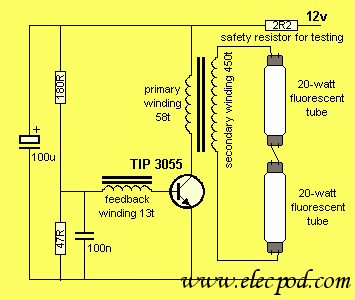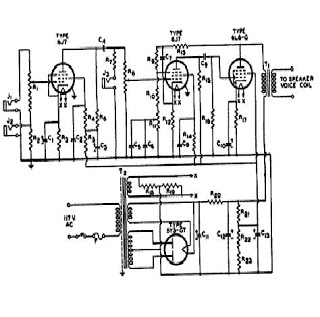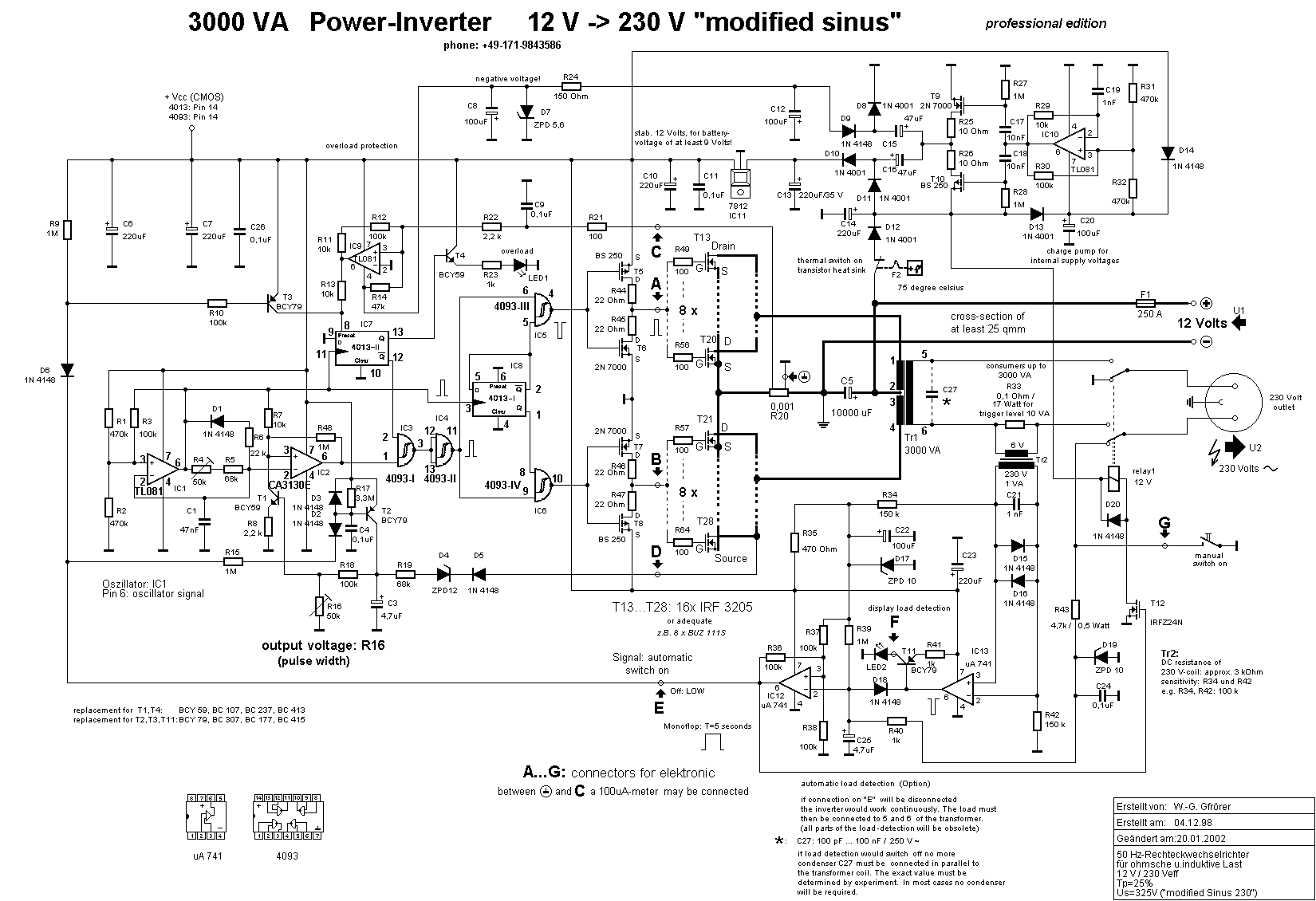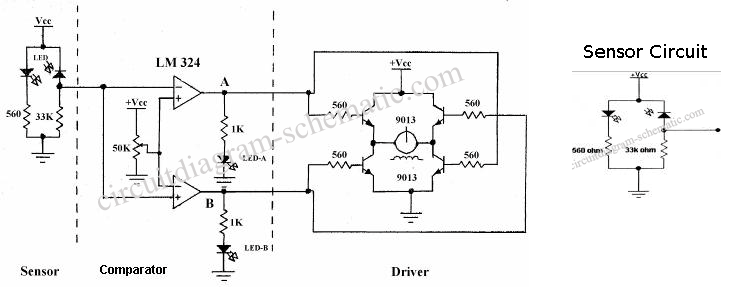
12v Fluorescent Inverter by TIP3055

This project is a cost-effective solution for operating 20 or 40-watt fluorescent tubes. The most efficient configuration utilizes a 40-watt tube or two 20-watt tubes connected in series. The circuit can be assembled using components sourced from a junk box or can be constructed from a kit. It is designed to be straightforward to build and does not require a printed circuit board.
The circuit for this low-cost fluorescent tube project typically includes a power supply, a ballast, and the fluorescent tube itself. The power supply converts the mains voltage to the appropriate level required for the fluorescent tubes. For a 40-watt configuration, the circuit must deliver a stable voltage and current that matches the tube specifications, ensuring optimal performance and longevity.
The ballast plays a crucial role in regulating the current flowing through the fluorescent tubes. It prevents the tubes from drawing excessive current, which could lead to overheating and failure. In this design, an electromagnetic or electronic ballast can be used, with the electronic ballast being more efficient and compact. The selection of the ballast should be compatible with the wattage of the fluorescent tubes being utilized.
When assembling the circuit, attention must be paid to the connections and the orientation of the components. Proper insulation and secure connections are essential to prevent short circuits and ensure safety during operation. The circuit layout can be arranged on a breadboard or a custom-built enclosure, allowing for easy modifications and testing.
For the two 20-watt tubes in series configuration, the circuit must ensure that both tubes receive equal voltage and current. This can be achieved by connecting the tubes in series while maintaining proper isolation from the mains supply. The overall design should also incorporate safety features such as fuses or circuit breakers to protect against overloads and short circuits.
In conclusion, this project offers a practical approach to utilizing fluorescent tubes in a cost-effective manner, leveraging readily available components and simple assembly techniques. The emphasis on efficiency and ease of construction makes it an attractive option for DIY enthusiasts and those looking to reduce lighting costs.This is a low-cost project for 20 or 40 watt fluorescent tubes. However the most efficient is to use a 40 watt tube (or two 20 watt tubes in series). It`s a circuit you can put together from junk box components or build from a kit. It`s very simple to build and requires no printed circuit board. 🔗 External reference
The circuit for this low-cost fluorescent tube project typically includes a power supply, a ballast, and the fluorescent tube itself. The power supply converts the mains voltage to the appropriate level required for the fluorescent tubes. For a 40-watt configuration, the circuit must deliver a stable voltage and current that matches the tube specifications, ensuring optimal performance and longevity.
The ballast plays a crucial role in regulating the current flowing through the fluorescent tubes. It prevents the tubes from drawing excessive current, which could lead to overheating and failure. In this design, an electromagnetic or electronic ballast can be used, with the electronic ballast being more efficient and compact. The selection of the ballast should be compatible with the wattage of the fluorescent tubes being utilized.
When assembling the circuit, attention must be paid to the connections and the orientation of the components. Proper insulation and secure connections are essential to prevent short circuits and ensure safety during operation. The circuit layout can be arranged on a breadboard or a custom-built enclosure, allowing for easy modifications and testing.
For the two 20-watt tubes in series configuration, the circuit must ensure that both tubes receive equal voltage and current. This can be achieved by connecting the tubes in series while maintaining proper isolation from the mains supply. The overall design should also incorporate safety features such as fuses or circuit breakers to protect against overloads and short circuits.
In conclusion, this project offers a practical approach to utilizing fluorescent tubes in a cost-effective manner, leveraging readily available components and simple assembly techniques. The emphasis on efficiency and ease of construction makes it an attractive option for DIY enthusiasts and those looking to reduce lighting costs.This is a low-cost project for 20 or 40 watt fluorescent tubes. However the most efficient is to use a 40 watt tube (or two 20 watt tubes in series). It`s a circuit you can put together from junk box components or build from a kit. It`s very simple to build and requires no printed circuit board. 🔗 External reference





